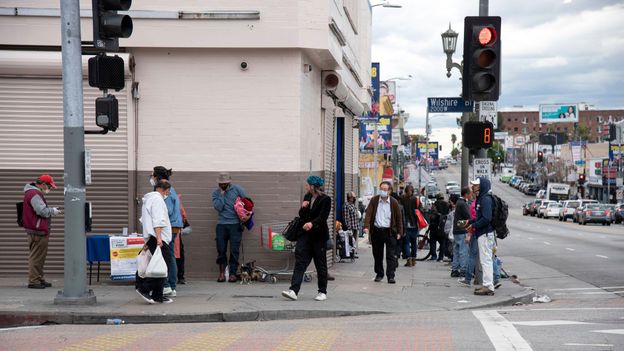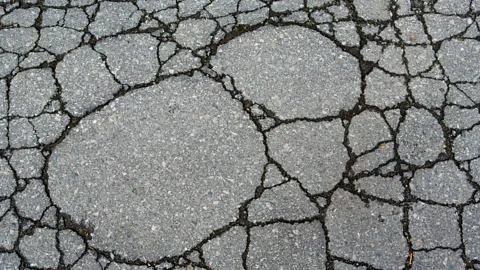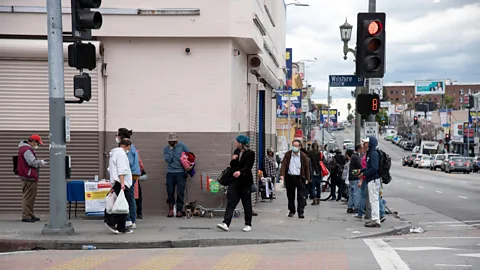
Why some city districts are hotter than others
[ad_1]

 Alamy
AlamyIn many major cities, poorer residents live in hotter neighbourhoods, which can pose major challenges – and even put health and wellbeing at risk.
Eleven degrees Celsius, or 20 degrees Fahrenheit. That’s how much hotter it can be in a different neighbourhood in the same city. The people living in those hot spots – largely low-income residents and people of colour – face far greater challenges than those living in wealthier districts, including less productivity at work, less access to green space, more pollution, even higher rates of death.
This dangerous discrepancy is called the ‘intraurban variability of temperature’ – or simply the ‘heat gap’. It occurs in cities all over the planet, and exists because some neighbourhoods end up getting far less investment than richer areas do. As a result, buildings in those areas tend to be lower quality – with less aircon and more porous walls, which let in heat. There are also fewer parks and green spaces that provide coolness and shade, and more paved areas to absorb heat.
“If a person lives in a really hot neighbourhood, it’s very likely that the neighbourhood is hot because of a series of disinvestments that have happened systematically and chronically over decades,” says Vivek Shandas, an assistant professor at Portland State University who specialises in climate change in cities.
Shandas says that many cities have histories of blocking immigrants and minorities from living in certain areas. The areas in which they were forced to live received fewer tax dollars, which created the lower quality of life that can trigger heat gap. The descendants of the affected often still live in those same neighbourhoods, making heat gap an inherited challenge and an example of generational inequality.
In the US, this plays out in part because of a process called redlining, in which the federal government denied mortgages to black families from the 1930s to the 1960s because they were deemed risky investments. This formerly legal form of discrimination effectively shut out certain communities, mostly people of colour, from buying a home in certain neighbourhoods. Financial and real estate institutions then effectively stopped serving the districts in which those who were discriminated against ended up living. Redlining has been illegal for decades now, but the effects continue to be seen to this day all over urban America, and is a major contributor to the heat gap.
This is the case in US cities such as Baltimore, Portland in Oregon and the national capital of Washington, DC. Another example is Los Angeles, where the heat gap can be particularly perilous – the city has high average temperatures to begin with, but sees more heat waves and droughts due to climate change.
Similar examples abound all over the world.
“In South Africa, with a long history of apartheid and segregation, I was blown away with how similar it is [to] a lot of the redlining that’s happened here in the United States,” says Shandas. “Lower income communities – often black African communities – were living in the segregated neighbourhoods that also are some of the hottest neighbourhoods in the cities of Cape Town or Johannesburg.”
Shandas was part of a team that researched heat gap in Doha, Qatar – a place that’s become so hot because of climate change that it’s begun to air-condition the outdoors. The researchers found that if you’re richer and not an immigrant, you’re much more likely to live in a place with better air conditioning and better green spaces, including oases.
There are potential solutions in addressing why the heat gap exists and how to close it.
For now, the quickest fix is to just give people more aircon. But as long as it’s not fuelled by renewable sources like solar or wind, aircon use could add even more carbon emissions to the atmosphere and make it even hotter. That situation is also “more of a drain on the electrical grid, causing more brownouts and blackouts”, says Carlos Martín, a senior fellow at the Urban Institute think tank in Washington, DC.
 Alamy
AlamyMartín points to Melbourne, Australia, which “has a massive tree-planting plan” that saw both public and private investments. He also names Phoenix, Arizona and Los Angeles for their subsidy programmes for tree-planting and tree maintenance in lower income areas. But he emphasises that a long-term solution is about more than simply planting trees: “It boils down to investments of money in places that, in some cases, other wealthier communities may be averse to the use of their tax dollars [going towards] that.”
“There is actually so much hope in this,” says Shandas. “We’re recognising these levels of systemic racism that have played out for a very long time [as well as] the recognition of how the systems that we have created have been propelling some communities to be safe and secure” and temperature-wise, “really cool”. (Minneapolis, the place where George Floyd’s death triggered a worldwide reckoning with systemic racism, also suffers from heat gap.)
That’s why, if we want cities to be comfortable – and more importantly, safe – for all their residents, we need to think bigger than just better building design and adding green space. Shandas says, “We need to be thinking about those social and policy levers as much as we need to be thinking about infrastructure.”
[ad_2]
Source link





